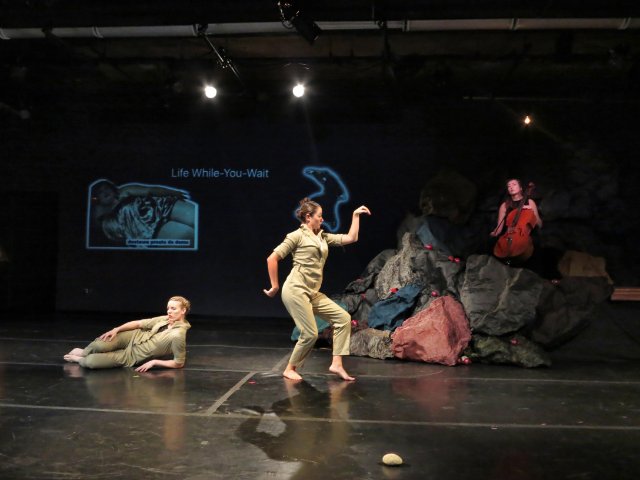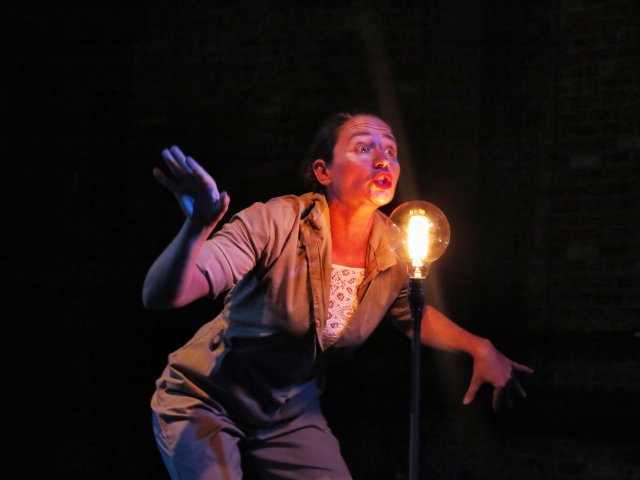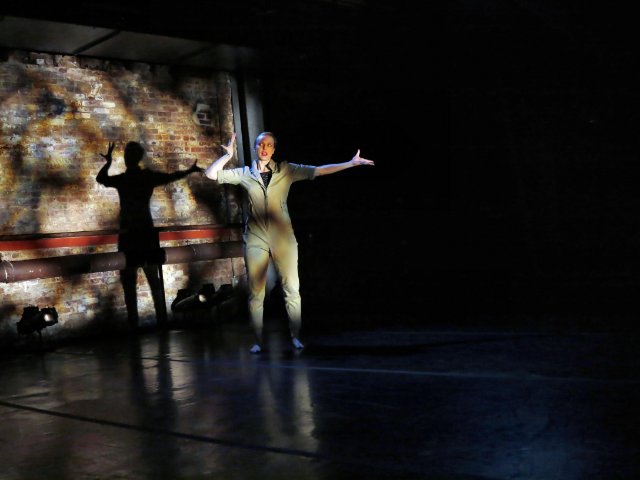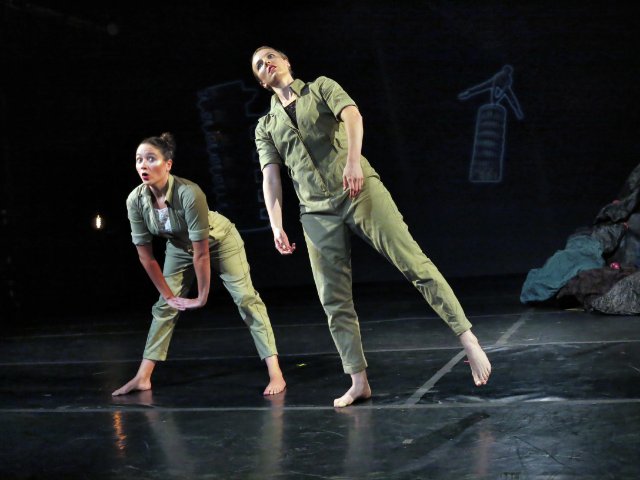This is Why We Live at La Mama
Open Heart Surgery Theatre Presents Physical Take
By: Rachel de Aragon - Sep 22, 2019
Open Heart Surgery
This Is Why We Live
Directed by Coleen Shirin MacPherson
La Mama
New York, New York
September 19-29, 2019
Coleen MacPherson and her talented company bring 21 poems of the Polish poet Wislawa Symborska to the stage. Symborska, who won the Nobel Prize for literature in 1996, provides a 'script' which is both lyrical and amusing. The collaborative vision of Open Heart Surgery was born in Toronto in 2014, but this all female ensemble is international in both personnel and its vision.
Dramaturgy and translation support was provided by Viktor Lukawski with the French translation by Piotr Kaminski and the English translation by Clare Cavanagh and Stanislaw Baraczak. The conceptualization of the work is multi-layered, incorporating the performance of cellist Dobrochna Zubek and original music by Tatiana Judycka and Zubek. Zubek said of her own work, "The Bridge between the Arts found in interdisciplinary performances fascinates me. Through creative improvisation, I find that I can make a strong connection and effectuate a dynamic and integrative performance."
This piece can be defined in terms of that bridge. The outstanding performances of Alaine Hutton and Elodie Monteau are well worth watching. This is an intelligent piece which clearly incorporates the abilities of several artistic modalities. The costumes and set by Helen Yung and assistant Judie Plaza and Kevin Yung are very simple and yet ironically apropos.
On a bare stage punctuated by sparse shadow casting lighting by Rebecca Pickerak and assistant Nic Vincent, the cellist sits among bare boulders. The poems are dramatically spoken in their original Polish and projected on the wall in English. We are teased with a provocative montage of life choices. The emotions that these images elicit are brought to life by Hutton and Monteau.
Although the professional roots of the company are in the physical theater pedagogy of the Ecole Jacques Lecoq, they bring a breadth of experience and vision to that vision within the context of the poetic voice. In so doing, the performance moves from physical drama through pantomime into dance. French, Polish and English are used. The energy is held most effective when Hutton and Monteau use of their bodies as vehicles for emotional expression.
This is Why We Live is a thematic bouquet which explores the worlds in which we live, both animate and inanimate. Conversation with a Stone is a delightful skit that demands we smile at our quest for intimacy. Starvation Camp Near Jaslo looks at man's inhumanity to man and the emptiness we bequeath to the living upon our deaths. We wonder at our desire to encounter the unapproachable In Non-Existent Himalayan Expedition and are drawn into a the emotions of a montage of mourners in Funeral II.
We live because we do. And unlike the stone, the leaf and the mountain, we are ever aware of our joys and despair. The poet, Szymborska lived through the most trying times in the history of her country and the world. Both the Nazi defeat and occupation of Poland. and the harsh peace of the Stalinist years. emerge as in her voice for the human spirit. She sings a poignant song of joy to its frailty and strength.





